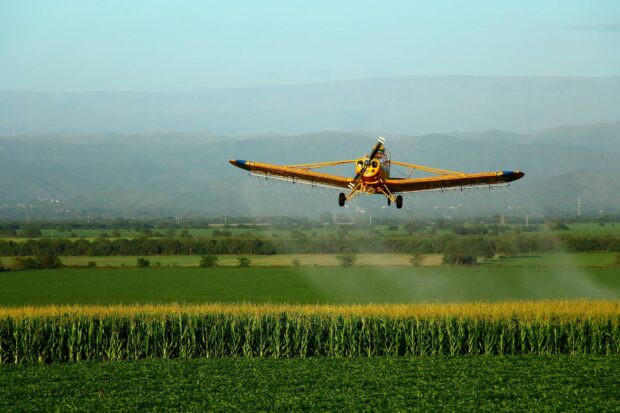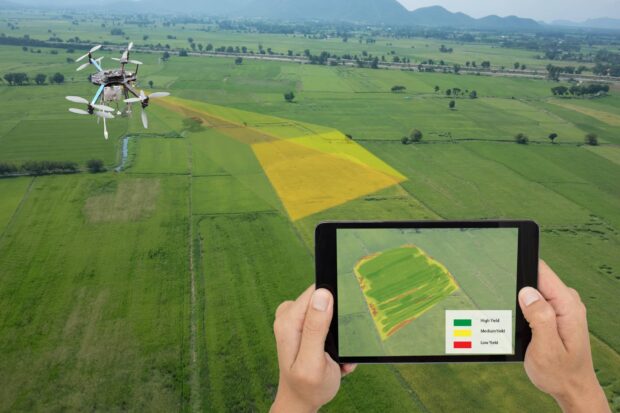More people than ever before are unsure where their next meal will come from. According to Worldbank.org, food insecurity around the world is at its highest levels in decades. In Jefferson County, Mississippi one of every three residents is food insecure. US food insecurity has become so widespread 41 states now have a food-insecure population of 10% or more of their total population.
This insecurity is due not only to the COVID pandemic, but can also be attributed to natural
hazards like pests and climate change. A growing world population is another factor.
Shortages may continue. In fact, a 2009 panel of experts told the UN’s General Assembly food production needed to double by 2050 to meet the world’s growing food demands.
Sustainable land management is the key to meeting these challenges. It’s more important than ever for farmers to look to technology to mitigate the effects of natural hazards.
In addition, technology can protect agricultural operations against the possibility of economic losses. Drone technology has the potential to help through better use of cultivable land area, earlier identification of risks, and more efficient animal husbandry.

Pest Control
COVID-19 wasn’t the only plague to affect the world in 2020. Locust swarms unlike anything seen for decades covered two parts of two continents. Affected countries included Ethiopia, Kenya, Somalia, Uganda, Iran, India, Saudi Arabia, and Pakistan. Individual swarms covered as much as 900 square miles. These infestations put 25 million people at risk of acute food shortages.
Local officials turned to drone technology to fight back. Locusts were so dense they damaged UAV propellers during pesticide applications. But UAVs successfully saved many crops from infestation. Also, many locations used drones for post-disaster crop damage assessment.
The US Environmental Protection Agency has discussed the possibility of allowing UAVs for the application of pesticides to in-field crops. Ed Messina, the deputy office director for programs within the Office of Pesticide Programs (OPP) stated “UAVs in agriculture really represents an example of some of the transformative technologies that are currently shaping the world.” However, the panel remains divided on how to realistically apply this technology while maintaining public health and abiding by FAA, state, and current EPA regulations.

Weed Identification and Real-time Monitoring
Weed management has been around as long as agriculture. Weeds compete for space and
nutrients, rob the soil of moisture, and may lead to decreased yields or a weakened crop.
The oldest mitigation methods relied on time-consuming manual identification and removal.
Modern agriculture uses methods like herbicides or mechanical removal through tilling, mowing, or burning. But weeds still need to be located and identified before removal can begin. Overhead identification tends to be faster than ground-based options due to the ability to scan more ground in less time. Drones excel at this.
Unlike manned agriculture aircraft, UAVs offer the flexibility to pass over fields at low speeds and at lower altitudes. Traditional aircraft move over crops at a standard 300m flight altitude. At that height it’s almost impossible to differentiate between crops and weed patches using traditional RGB scans. Drones use lower flight altitudes-as lower as 10 meters–with lower passover speeds–making them more capable of capturing this information. Some drones are so successful they can identify individual weed plants.
Additionally, drones can be used for soil analysis, providing farmers with detailed information on moisture content, erosion patterns, and possible amendments needed.
Livestock Management
Industrial cattle farming requires large swaths of land. Ranches often use land where the
topography is too rough for motorized vehicles. Instead, farmers have relied on slower,
traditional methods of transportation like horseback to locate herds. Others have turned to
helicopters for a faster–but more expensive way–of locating their animals.
Drones solve both problems of speed and economy. Significantly less expensive than
helicopters that can cost up to $1,500 an hour for cattle location and mustering services, drones allow pilots to bypass topographic barriers like rivers and ravines from the safety of their base location while searching for animals. Moreover, drones can be used for mundane tasks like inspecting fence lines, checking water troughs, and monitoring the individual health of animals from afar.
Conclusion
Opportunities for drone use in agriculture continue to expand. Their low cost, ease of use,
overall flexibility, and ever-increasing abilities make them an exciting tool for agriculture, limited only by local and federal oversight. However, as demands for food increase around the world, these limitations will need to be rethought and addressed.

